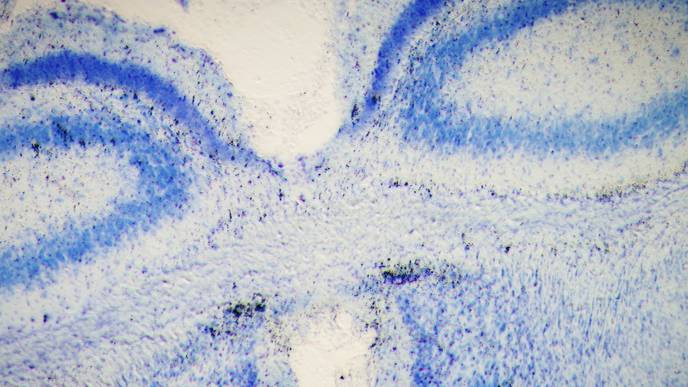Human Brain Seems Impossible to Map. What If We Started With Mice?

10/09/2023
The human brain is a tangled highway of wires emanating from nearly 100 billion neurons, all of which communicate across trillions of junctions called synapses. “Depressingly complex,” Harvard neuroscientist Jeff Lichtman calls it. The only way to understand this highway, says Lichtman, is to create a map.
Lichtman, the Jeremy R. Knowles Professor of Molecular and Cellular Biology, has spent several decades generating such maps, and in doing so has pioneered a field known as “connectomics.” His ultimate goal is a whole-mammalian brain map accounting for every neural connection, a so-called “connectome.”
Now, Lichtman and colleagues are embarking on a critical new step of that journey by seeking to capture synapse-level connectome data from a mouse brain at unprecedented clarity and resolution.
Lichtman and partners including Princeton University, MIT, Cambridge University and Johns Hopkins have received $30 million from the National Institutes of Health and an additional $3 million from Harvard and Princeton toward the goal of reconstructing, for the first time, all the neural wiring inside a mouse brain. They’ll prove the feat possible by first imaging a 10 cubic-millimeter region in the mouse hippocampal formation, the portion of the brain responsible for memory consolidation, spatial navigation, and other complex tasks.
Like the Human Genome Project cataloged every human gene and its unique DNA sequence, Lichtman’s connectome, which he has worked on since arriving at Harvard in 2004, would be a comprehensive diagram of every neural connection in the brain.
Comparing brain volume from worm to human
Each 1,000 cubic microns of brain volume is schematically represented by a 1 cm. linear distance.
Source: "The Mind of a Mouse," Cell; Jeff W. Lichtman and Viren Jain
Creating a connectome of the human brain could lead to new approaches in diagnosing and treating disorders of the brain, from autism to schizophrenia. Scientists suspect these diseases are “connectopathies” — subtle miswirings that no currently available brain scans can detect.
“Connectomics is the only pathway,” said Lichtman, an affiliate of Harvard’s Center for Brain Science. “If we get to a point where doing a whole mouse brain becomes routine, you could think about doing it in say, animal models of autism. There is this level of understanding about brains that presently doesn’t exist. We know about the outward manifestations of behavior. We know about some of the molecules that are perturbed. But in between, the wiring diagrams, until now, there was no way to see them. Now, there is a way.”
The National Institutes of Health awarded new recipients of the Brain Research Through Advancing Innovative Neurotechnologies® Initiative, or BRAIN Initiative, funding in early September. The Harvard team is being funded through the BRAIN Initiative Connectivity Across Scales network, aimed at developing research capacity and technical capabilities for creating wiring diagrams of whole brains.

Facebook Comments